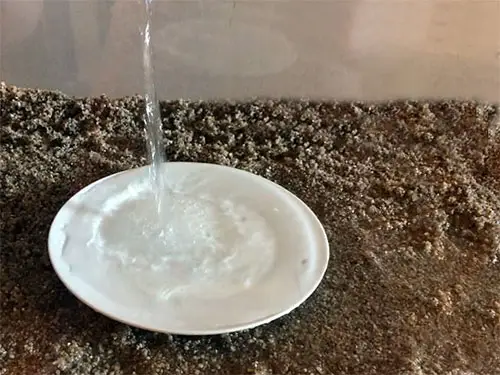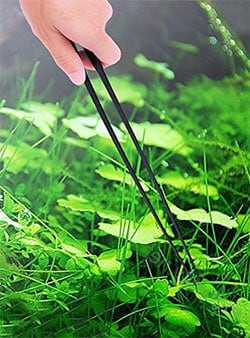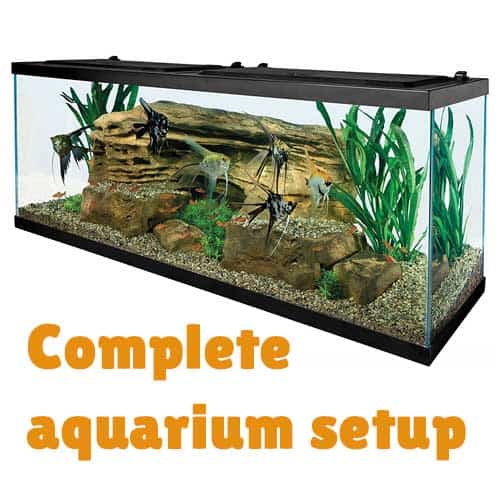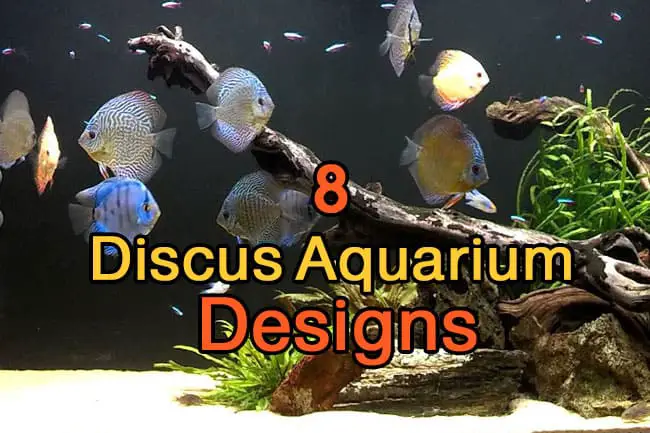
When planting Discus in a tank, there are a lot of factors to be considered. These factors include choosing a location for your aquarium tank (which vertical placement is the best), the shape and depth of the tank you have chosen, heat supply, Discus tank filtration, water supply, and aquarium material.
Other factors like aquarium plants, food, and drugs for your Discus come afterward. Follow through and I will show you how we can keep Discus in a planted tank.
Table of Contents
- Things To Consider Before Setting Up A Discus Planted Tank
- How To Set Up a Discus Planted Tank
- How Do You Care For A Discus Planted Tank?
- How To Clean A Discus Planted Tank?
- Related Questions
- Conclusion
Things To Consider Before Setting Up A Discus Planted Tank
There are some things to consider before setting up a planted Discus tank, which include:
- Discus tank size – 50 gallons tank is the minimum tank size for Discus, and this tank can carry a minimum of 5 fish.
- Discus tank requirement – You will require a lot of equipment to plant your tank, of which some are mandatory, and others are optional. The mandatory includes; an aquarium heater, water filter, air pump, thermometer, water test kits, water changing kits, aquarium cleaning kits, lights, and hoods. Among the optional are; CO2, plants, driftwood, and decorations.
- Types of Discus Tank – There are two types of Discus planted tanks; the hobbyist and breeding tank. The hobbyist tank is the main tank or community tank, where the fishes are fed, cared for, and grow, while the breeding tank is where the breeding pairs are prepared for spawning.
How To Set Up a Discus Planted Tank
Here is a step-by-step guide to help you set up your Discus planted tank:
[1] – Select The Location Of Your Tank
You can select the best location for your tank based on the following factors; the size of the Discus planted tank, the size/layout of your home, and the size of the aquarium you intend to plant. Putting these factors into play, the best place for your tank might not be the best place for your Discus. To guide you, you need to consider:
- Where your planted tank can be seen so that everyone around can enjoy the view.
- Easy access to water supply and light to reduce the stress of using the heater and filter.
- Consider the space capacity of the location you choose if it is spacious enough to contain the ordered equipment you need and perform water changes efficiently.
- Is the temperature stable enough? You do not want your tank close to a heater or an open window because unstable temperature causes a lot of distress to the fish.
- Is it a firm platform? The location of your tank must be able to carry the weight of the tank without compromise. It is preferable to get a tank with its own standing body or table.
- Avoid a location with any source of direct sunlight because this can cause algae growth in your Discus planted tank.
[2] – Select The Size And Shape Of Your Tank
Consider the size of your tank based on the amount of Discus you want to plant and the shape based on your preference and the space of your location. There are several shapes of discus tanks, e.g., square, rectangle, circle tanks, but the acrylic rectangle tanks are safest for discus fishes.
Discus fishes are schooling fishes; they exist better and happier when they are many. Nevertheless, they must be spaced out, with a minimum be of 5 fish per 50-gallon tank. Also, note that the bigger your tank, the more beautiful it is and the happier your fish will be.
[3] – Select Your Filtration System
You will select your filtration system based on your tank type and tank size. The Discus planted tank preferably uses the external canisters powerful filtration system because this filtration system performs biological, mechanical, and chemical. Although there are other filters, they will not do a perfect job like the external canister filter.
[4] – Select Proper Lights For Your Planted Tank
The appropriate amount of light for discus fish per gallon is about 1 to 1.5 watts of light. You must set the light on a timer for a maximum of 6-8 hours a day and ensure that this light gets to every corner of the tank.
[5] – Select Your Substrate
You have to decide which substrate to put in your tanks based on your preference. You have to put your soil first before the substrate for planted tanks, you can also go with gravel or sand, but the soil should come first.
[6] – Select Your Plant
For Discus planted tanks, you are advised to use strong plants, with the smaller ones coming in front while the big ones are placed behind so that the fishes will be free enough to swim.
[7] – Set Up Your Discus Planted Tank
Follow this step-by-step guide to set up your Discus planted tank:
[1] – Clean up your tank and place it in your chosen location
Place your soil and substrate, not too deep or shallow; 2 – 3 inches is enough. Before adding the sand, put it in a big bucket, fill the bucket with water, select all small particles from the sand by moving your hand through the sand, rinse and pour out the water and small particles, repeat the process until the water is clear.

[2] – Add Water to The Tank
Add sufficient water to fill your tank but not to the brim, ensure there is a saucer in the tank while pouring the water, to ensure that no water splashes on the body of your tank.

[3] – Place your aquarium plants
Remove the plant from the initial base it came with then insert gently through the sand to the soil to a reasonable depth.

[4] – Add the rest of your decorations.
[5] – Set up the aquarium water filter and water tubes.
[6] – Install the water heater into the tank.
[7] – Install your aquarium lights.
[8] – Fix your Air pump tubes.
[9] – Use the water test kits and install the thermometer.
[10] – Add your Discus to your newly planted tank.
How Do You Care For A Discus Planted Tank?
- Trim Aquarium Plants: One of the ways to care for your tank is to trim your plants. If your plants are getting overgrown then it is safe for your fish if you trim the plants. Live plants are always preferable but if you have artificial ones ensure you scrub them. This is important because the dirt can cause the growth of a lot of bad algae which then spreads into your tank’s water.
- Clean up the pebbles: Clean the pebbles in your tank if you have them as substrate. Scrub them with an all-natural bamboo brush, but if your substrate is gravel then you can use a sponge to scrub.
- Always clean the lid of your tank: This is very important as it can be very dangerous for your fish because this lid contains evaporated water that can lead to the growth of mold.
How To Clean A Discus Planted Tank?
Here is a step-by-step guide to cleaning your Discus planted tank:
[Step 1] – Pre-cleaning procedure
- Turn off the aquarium power.
- Fill a bucket with water 25% of the size of your tank.
- Use a scrub or toothbrush to clean debris off the filter.
[Step 2] – Tank Cleaning Procedure
1. Clean the aquarium glass: When scrubbing the glass with your scrubbing tools, if your substrate is sand be careful not to scratch the glass with sand or snails hooked to the sponge. Also, you might consider using a razor blade if the green spot algae are not coming off with a sponge. But be careful not to hurt yourself with the blade.
2. Siphon water out: There are different siphons you can use as an example I am using Python No Spill (Clean and Fill), so ensure you select whichever is best for you. The goal is to remove 25% of the water in the tank into a bucket and this process might take a long time. While siphoning the water, you can place a sponge on the mouth of the siphon to prevent slow fish like Corydoras from getting stuck in it.
3. Remove debris with a net: Move the net in a back and forth motion to capture as much debris as possible, but be very conscious of the fishes and the plants.
Related Questions
Will Discus Eat My Plants?
Yes, Discus will eat your plants because they love detritus and other plant material. Also, Discus feasts on worms and small crustaceans found on the bottom of the tanks. Some of the feeds for Discus are Color Flakes, Tropical Granules, Aqueon Tropical Flakes, Shrimp Pellets, Algae Rounds, and Spirulina Flakes.
Is Driftwood Good For Discus?
Driftwood is good for Discus because it provides the aquarium with the aesthetic feel of a natural river. Also, driftwood provides the aquarium with useful bacteria that helps detoxify the by-products of Discus fish, which helps keep the water less acidic and toxic.
What Is The Ideal Discus Planted Tank Temperature?
The ideal temperature for a discus planted tank is between 82-84°F. And, aside from temperature changes, there are other factors that affect the Discus like ammonia, nitrite, and water quality. Water quality of pH level from 5-7 and total hardness between 1-4°dKH is comfortable for most Discus and plants.
Conclusion
Discus fishes are very sensitive and there is so much effort that goes into caring for them effectively. Setting up your Discus planted tank should be easier with the guide we have provided.





